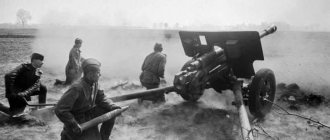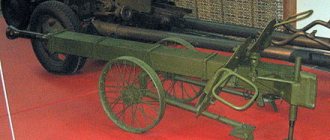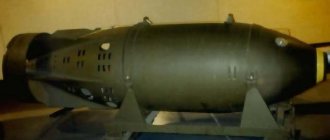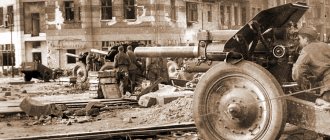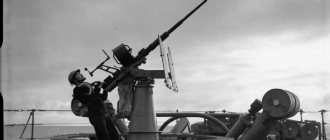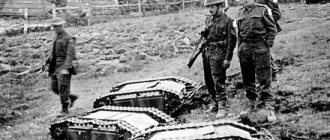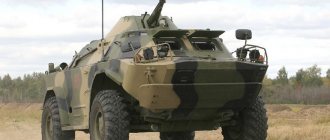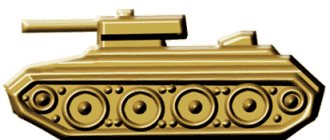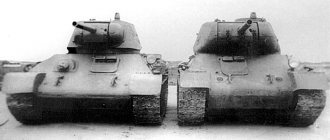Updated: June 28, 2020 at 1:37 pm World of TanksGuides
One of the most advanced tanks of the seventh level is the SU-152 self-propelled gun. This vehicle has separate tactics and a number of interesting advantages, including the highest one-time damage at its level. Let's look at its properties and tactics for playing this tank.
Modules
Guns
| Lv. | gun | Penetration (mm) | Damage (HP) | Rapid fire (rounds/min) | Spread (m/100m) | Mixing (c) | Weight, kg) | Price() |
| VII | 122 mm A-19 mod. 1937 | 175/217/61 | 390/390/530 | 6.67 | 0.43 | 2.9 | 2600 | 94000 |
| VI | 152 mm ML-20 arr. 1931/37 | 135/250/86 | 700/700/910 | 3.39 | 0.5 | 3.4 | 2500 | 49290 |
| VIII | 122 mm D-25S arr. 1944 | 175/217/64 | 390/390/530 | 8.11 | 0.41 | 2.9 | 2590 | 106400 |
Engines
| Lv. | Engine | Power (hp) | Fire probability (%) | Weight, kg) | Price() |
| VII | V-2IS | 600 | 15 | 750 | 36000 |
| VI | V-2K | 500 | 15 | 750 | 23050 |
Chassis
| Lv. | Chassis | Max. load (t) | Turning speed (gr/sec) | Rmin | Weight, kg) | Price() |
| VII | SU-152 | 45.9 | 20 | 0 | 12000 | 20090 |
| VIII | SU-152M | 48.3 | 23 | 0 | 12000 | 32710 |
Radio stations
| Lv. | Radio station | Communication range (m) | Weight, kg) | Price() |
| V | 10R | 360 | 100 | 3660 |
| VII | 10RK | 440 | 100 | 18600 |
| IX | 12RT | 625 | 110 | 33600 |
Airborne self-propelled gun ASU-57. Armament. TTX. Dimensions. Weight. Booking
A light airborne artillery mount of the anti-tank self-propelled gun class was developed in the late 40s. specifically for arming airborne troops. And in 1951, the installation was accepted for service and was mass-produced until 1962. ASU-57, a semi-closed installation with a front-mounted MTO, had a fighting compartment, combined with a control compartment, and located in the rear of the hull. It housed a crew of three people and a gun. The bulletproof armor protection of the hull was made of steel and aluminum armor plates, which were welded together.
Historical reference
Main article
:
History of the SU-152
The self-propelled unit SU-152 (KV-14) was developed in December 1942 - January 1943 by the design bureau of the Chelyabinsk Kirov Plant under the leadership of Zh. Ya. Kotin based on the design bureau UZTM, completed by G.N. Rybin, K.N. Ksyunin and others in March 1942. The lead designer of the machine was L.S. Troyanov. The prototype was manufactured on January 24, 1943 and had the factory designation KV-14 (“Object 236”). At the beginning of February 1943, the installation was successfully tested at the Chebarkul test site and, by decree of the State Defense Committee of February 14, 1943, was adopted by the Red Army. In mass production, the life of the SU-152 turned out to be short-lived - in 1943, the development of a new heavy IS tank was in full swing at ChKZ, which, although it was a direct successor to the KV, was not “backwards compatible” with it in terms of components and mechanisms. Since the SU-152 has proven itself very well in battle, from the very beginning of design work its equivalent was developed based on the IS tank. At the end of October 1943, such a machine was built, received the name ISU-152 and, after successful tests, was put into mass production. In November and December 1943, the SU-152 was produced jointly with the ISU-152, and from January 1944, the latter completely replaced the SU-152 on the ChKZ assembly lines. Thus, December 1943 became the last point in the history of mass production of the KV tank and vehicles based on it. The total number of SU-152s built varies in different sources of information; the most often cited figures are 670 or 704 self-propelled guns produced.
Photos and drawings
- SU-152 crews at rest
- Hot summer of 1943...
- German SU-152 stuck in the snow
- SU-152, captured in the fall of 1943
- SU-152 first production series
- SU-152 stuck in mud and blown up
- German soldiers inspect an abandoned SU-152
- SU-152, Ser. No. 30351, exhibited in the museum in Jonow, Poland
- SU-152, Ser. No. 30954, exhibited in the museum in Jonow, Poland
- SU-152, exhibited at the NIIBT museum in Kubinka
Use and further development[ | ]
| This section is not completed. You will help the project by correcting and expanding it. |
Vehicles manufactured in 1941 at different times entered service with the 122nd, 123rd, 124th and 125th tank brigades, and vehicles manufactured in 1942 entered service with the 220th tank brigade. The brigade normally had a battery of 4 self-propelled guns.
One unit, identified according to documents as “T-26 S.U.”, was available in the 220th tank brigade of the Lenfront on December 11, 1943[3].
According to some reports, in the same year T-26-6
was renamed
SU-76P (“regimental”)
to avoid confusion with the new production vehicle under the same designation[2]. None of the cars survived.
Literature
This book is the first major study in Russia of the history of self-propelled guns based on the KV heavy tank. The new work by Yuri Pasholok fully shows the evolution of heavy self-propelled guns, starting with the SU-14 and S-51 and ending with the serial SU-152. The book is entirely based on archival documents. More than half of the text and graphic material presented in it is published for the first time. In addition, a number of projects of self-propelled units based on the KV tank, previously unknown to historians of Soviet armored vehicles, are mentioned for the first time.
Notes[ | ]
- Armor website: Armored Encyclopedia/SU-76P
- ↑ 123
Encyclopedia of the game "World of Tanks"/SU-26 - TsAMO RF, fund 3273, inventory 1, file No. 15, p. 27
- Chassis T-26 (Russian) // Wikipedia.
- T-26 (Russian) // Wikipedia.
- The SU-26 and T-26 had the same transmission. (Russian) // Wikipedia.
- SU-26 | Tank science | World of Tanks
Sources[ | ]
https://web.archive.org/web/20160414052147/https://all-tanks.ru/content/samokhodnaya-artilleriiskaya-ustanovka-su-26-su-76p
Description
According to experts, the SAU-100 has the same layout as the base tank. The front part of the armored vehicle became the location of the management and combat compartments, and there was a place in the rear for the engine and transmission compartment. In German tank construction, a traditional layout was used, when the power unit was installed on the stern, and the drive wheels and transmission were installed on the front. The E-100 Jagdpanzer self-propelled gun had a similar device. Design work on this model was carried out in 1943 in the city of Friedberg. The Germans, as we see, also tried to optimize the production of armored vehicles as much as possible. For example, Wehrmacht experts considered that the production of the super-heavy Maus tank would cost the country too much. Therefore, the Jagdpanzer was developed as an alternative to the Maus. The combat crew of the SAU-100 tank consists of four people, namely: driver, commander, gunner and loader.
The driver was located in the frontal part on the left, and the commander was located on the right side of the gun. Behind him there was a workplace for the loader. The gunner sat behind the mechanic on the left side. To allow the crew to embark and disembark, the armored hull was equipped with two hinged hatches - in the roof of the commander's tower and at the stern. The combat crew could land through a hatch located in the bottom of the fighting compartment. The hatch in the wheelhouse was used for a panorama of the gun. If necessary, crew members could fire personal weapons. Especially for this purpose, the armored hull of the self-propelled gun was equipped with holes that were closed using armor plugs. The roof of the cabin was equipped with two fans. The cover in the engine-transmission compartment and the hinged upper aft plate contained several hatches through which the mechanic, as in the T-34, could get to the transmission and power unit. All-round visibility was provided by five viewing slots in the tank's turret. In addition, the turret was equipped with a Mk-4 periscope viewing device.
Self-propelled gun SU-100. TTX. Armament. Dimensions. Shells. Weight. Speed
Structurally, the medium anti-tank self-propelled gun SU-100 was in many ways similar to the earlier SU-85. The main differences between these two vehicles concerned only the type of artillery system and related hull modifications. The SU-100 chassis, completely borrowed from the SU-85, included the following components (for one side): - five road wheels with a diameter of 830 mm with rubber tires and individual spring suspension; - front idler wheel, cast, with a crank mechanism for tensioning the tracks ;- rear drive wheel with six rollers for engagement with the ridges of the caterpillar tracks;- the caterpillar consisted of 72 cast steel tracks with a width of 500 mm and a pitch of 172 mm (36 with a ridge and 36 without a ridge), the total mass of the track was 1150 kg.
SU-122A in the game
Research and leveling
The SU-122A self-propelled gun can be researched at the SU-5 for 12,570.
| Engine |
| M-80 |
240 4130
| Chassis |
| SU-122A reinforced |
2050 8500
| gun |
| 152 mm howitzer D-1 |
6400 61000
| Radio station |
| 12RT |
5600 33600
| Result: | |
| Credits: | 107230 |
| Experience: | 14290 |
Combat effectiveness
Advantages:
- small dimensions;
- high one-time damage of a top gun;
- good mobility.
Flaws:
- mediocre horizontal aiming angles;
- small ammunition;
- low accuracy;
- long mixing;
- low rate of fire of the top gun.
Crew
- Combat Brotherhood
will increase the characteristics of the tank. - Camouflage
will increase the machine's stealth. - The combination of Smooth turret rotation
+
Smooth movement
will allow you to waste less time on alignment when moving and turning the turret. - The sixth sense
will help determine whether a tank is detected or not. - The off-road king
will increase mobility on soft soils. - Radio interception
will improve your visibility a little. - Desperate
will increase DPM in heated battles. - Virtuoso
will improve maneuverability slightly. - The repeater
will slightly improve allied radios.
Equipment, equipment and ammunition
OF15
Equipment
- The rammer
will speed up reloading slightly. - The camouflage network
will increase the stealth of the vehicle. - Reinforced aiming drives
will speed up the aiming of the gun.
Equipment
Standard equipment - Repair kit
,
First aid kit
,
Fire extinguisher
, but if necessary, to increase dynamics, the fire extinguisher can be replaced with a
Twisted speed controller
.
Ammunition
The main shells are high-explosive.
Evaluation of SU-122A
- Defender
- often, when a base is captured, the enemy hides behind any objects, and then only artillery can break the capture. - Support
- Due to the long reload time and nature of aiming, artillery should deal damage, not finish.
History of changes
Main article
:
History of changes SU-122A
History of changes
Update 0.8.6
Introduced to the main server as a Tier 5 Soviet self-propelled gun.
Update 0.9.2
Minor errors and shortcomings in the visual model of the tank have been fixed.
Update 0.9.7
View range reduced from 340 to 300 m.
Update 0.9.10
The tank has been redesigned with a new visual quality.
Update 0.9.18
- Added 53-OF-531 shell.
- The BP-463 shell has been removed.
- The 53-BP-540 shell has been removed.
- The 53-OF-530 shell has been removed.
- The viewing range of the SU-122A turret has been reduced from 300 to 255 m.
- The armor penetration of the OF-462 shell for the 122 mm M-30 howitzer gun has been reduced from 65 to 32 mm.
- The armor penetration of the 53-OF-531 projectile for the 152 mm D-1 howitzer gun has been reduced from 88 to 38 mm.
- The damage caused by the 53-OF-531 shell of the 152 mm D-1 howitzer gun has been reduced from 910 to 600 units.
- Added a stunning effect to the 152 mm howitzer D-1 gun.
Update 1.9
- The ammunition capacity of the 122 mm howitzer M-30 gun has been changed from 20 to 24 shells.
- The ammunition capacity of the 152 mm howitzer D-1 gun has been changed from 15 to 18 shells.
- The cost of repairs has been reduced by 24%.
- Yield reduced by 6%.
- The M-80 engine level has been changed from III to IV.
- Durability changed from 210 to 275 units.
About the chassis
According to experts, in this area the self-propelled gun is practically no different from the base T-34 tank. Each of the sides of the self-propelled guns had gable road wheels (five pieces each). Their diameter was 83 cm. Rubber tires were provided for the chassis with the drive wheel, Christie suspension and sloth. Installation without support rollers - to hook the upper branch of the belt, we used support rollers. The drive wheels with ridge gearing were located at the rear, and the idlers with tensioning mechanisms were located at the front. Unlike the T-34, the chassis of the self-propelled gun, namely its front rollers, was reinforced with three bearings. The diameter of the wire springs was also changed from three to 3.4 cm. The caterpillar track was represented by 72 stamped steel tracks, the width of which was 50 cm.
In an effort to improve the maneuverability of an artillery mount, the tracks were in some cases equipped with lugs. They were fastened with bolts to every fourth and sixth tracks. In the 1960s The self-propelled guns were produced with stamped road wheels, like in the T-44M.
Self-propelled gun ASU-85 - video
https://youtube.com/watch?v=DznYHFOWTHM
There was a hatch in the bottom of the hull through which the crew could carry out an emergency evacuation. The frontal part of the hull and part of the conning tower were made up of a single sheet 45 mm thick, which was welded at an angle of 60 degrees. The sides were made of 13 mm armor plates and had an inclination of 40 degrees. Rational angles of inclination protected people from armor-piercing shells of small and medium calibers. The corrugated bottom made the hull even more durable.
The vehicle had a 6-cylinder diesel engine YaMZ-206V installed across the rear of the hull. To achieve the required power, the designers had to use a fairly large ejection cooling system that did not require extra energy. The mechanical transmission located next to the engine included the main clutch, gearbox, gearbox, two planetary rotation mechanisms and final drives. The chassis consisted of an individual torsion bar suspension with piston-type hydraulic shock absorbers on the front and rear units, single-row road wheels, rear-mounted drive wheels and a caterpillar track with omsh. In order to increase the power reserve, two additional fuel tanks were installed on the rear of the ASU-85.
ASU-85 was transported by An-12 aircraft, while the torsion bar suspension was turned off. The disadvantages include the fact that when landing an ASU-85, the aircraft had to make a mandatory landing on the runway, which negated the main tactical advantage of the landing - its surprise. This is one of the reasons why the car was removed from mass production in 1964.
The self-propelled gun was armed with an 85-mm D-70 cannon with a monoblock barrel equipped with an effective muzzle brake and an ejector for purging the barrel of residual powder gases. It was installed in the embrasure of the frontal plate in a frame in the middle of the conning tower and had the largest horizontal guidance angle among Soviet self-propelled guns, equal to 30 degrees. The vertical wedge breech of the gun was equipped with a semi-automatic copy-type mechanism.
The gun's ammunition consisted of 45 rounds of armor-piercing, cumulative and high-explosive fragmentation shells. The first penetrated an armor plate 53 mm thick, standing at an angle of 60″ at a distance of 2 km. The firing range of high-explosive fragmentation shells reached about 13.5 km. In addition, the vehicles were equipped with UD-367 smoke shells with steel casings, which were used to target friendly gunners and to disrupt the work of enemy observation and command posts.
As an auxiliary weapon, a 7.62-mm SGMT machine gun was used, coaxial with the cannon, and had 2,000 rounds of ammunition. Two BDSh-5 smoke bombs were installed at the rear of the hull, used to set up smoke screens. The ASU-85 was equipped with a telescopic articulated sight TShK-2-79-11, which was used for direct fire during the day, an S-71-79 sight with a gun panorama necessary for firing from closed firing positions, and a TPN-1-79 night tank sight -11 and a night vision device. The vehicle was equipped with an R-120 TPU, an R-113 radio station, a filter-ventilation device, infrared headlights used for driving the unit in poor visibility, as well as two infrared searchlights, one of which was located above the gun barrel, and the other in front of the commander’s hatch.
Combat use
— Six Day War
- Operation Danube. Entry into Czechoslovakia. As part of the artillery units of the 7th and 103rd Airborne Divisions.
— Afghan war. In the initial period of the war, as part of the artillery units of the 103rd Airborne Division.
